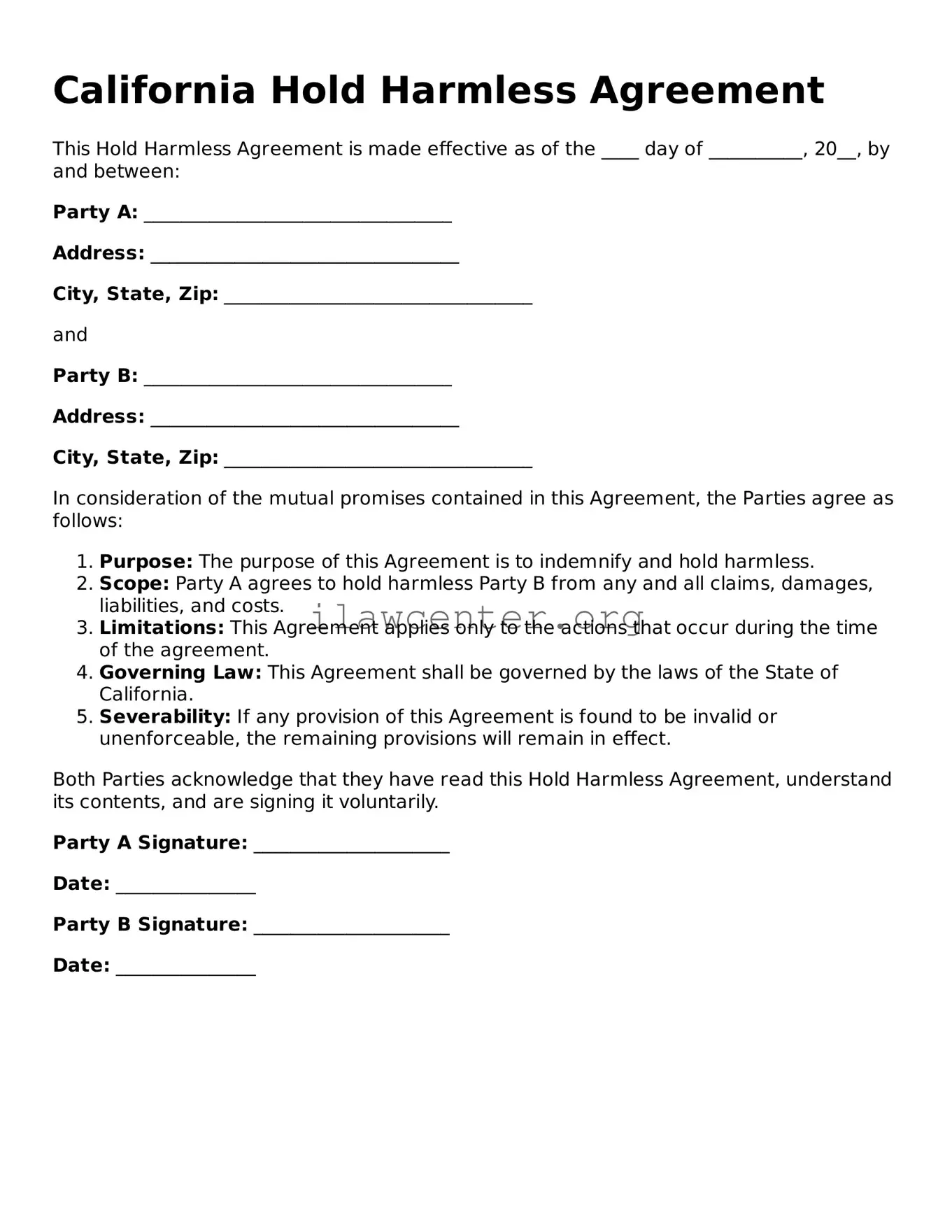What is a California Hold Harmless Agreement?
A Hold Harmless Agreement is a legal document used in California to protect one party from liabilities or claims that may arise during the course of a specific activity or event. This agreement outlines that one party agrees not to hold the other party accountable for certain risks and injuries that could occur. It is often utilized in various situations, such as events, construction projects, and business transactions, to clarify responsibilities and reduce the risk of legal disputes.
Who typically uses a Hold Harmless Agreement in California?
Individuals, companies, or organizations that engage in activities where there is a potential for harm or damage commonly use Hold Harmless Agreements. This includes landlords and tenants, event organizers, contractors, and service providers. Both parties involved may find it beneficial to enter into this agreement to delineate liability and ensure that all parties are aware of their responsibilities.
Are there any specific requirements for a Hold Harmless Agreement to be enforceable in California?
For a Hold Harmless Agreement to be enforceable in California, it must be written clearly and specifically state the intentions of the parties involved. Clarity is key to avoid ambiguity regarding the extent of the liabilities being waived. Both parties should sign the agreement, and it’s advisable to have the document reviewed by legal counsel to ensure that it meets all legal standards and adequately protects the parties involved.
Can a Hold Harmless Agreement protect against all types of liability?
While a Hold Harmless Agreement can provide significant protection, it does not necessarily shield a party from all types of liability. Generally, it cannot protect against gross negligence, willful misconduct, or illegal activities. Furthermore, California law requires that the terms of the agreement be reasonable. Therefore, it’s essential to carefully draft the agreement to ensure it serves its purpose without exceeding legal boundaries.
What should be included in a California Hold Harmless Agreement?
A well-drafted Hold Harmless Agreement should include several key elements. First, it should clearly identify all parties involved. Next, it needs to outline the specific activities or circumstances for which liability is being waived. The language should define the scope of the protection offered. Lastly, consideration should be given to including an indemnification clause, governing law, and a signature section to formalize the agreement. Careful attention to detail can prevent misunderstandings and future disputes.
